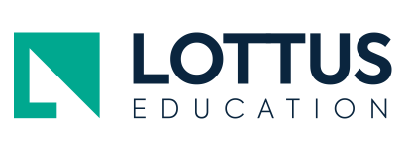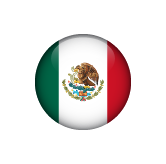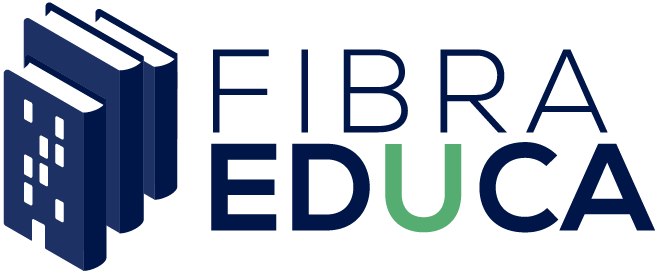Overview.
Educational System Structure
Doctoral Degree Programs
Mexico’s dual education landscape: public vs private sector comparison
- Funding and Governance: Government-funded, free tuition; overseen by the Ministry of Public Education (SEP)
- Curriculum: Standardized national set of courses for consistency
- Challenges: Faces limited resources, inadequate facilities, and teacher shortages, especially in rural areas
- Access and Equity: Compulsory for ages 3 to 15; quality varies between urban and rural areas
- Funding and Autonomy: Tuition-based, allowing flexibility in set of courses and resources. Largely funded through out-of-pocket contributions from families
- Curriculum: Offers diverse and specialized programs, including bilingual and international options
- Growth and Accessibility: Significant growth in urban areas; tuition fees limit access, but some scholarships are available
- Regulatory Oversight: Requires program validity recognition (REVOEs) from authorities to ensure standards
Distribution of educational institutions in Mexico
Key highlights
Mexico’s largest age group (20 – 24 years old) will sustain a strong higher-education market through 2030
Socioeconomic segments A/B, C, and C- are growing fastest, driving increased demand for private education
Nearshoring and economic growth are boosting demand for degrees and specialized skills
Undergrad degree holders earn ~34% more than those with only high school, reinforcing the value of higher education
~86% of higher education students pursue undergraduate degrees, with 70% focused on social sciences, education, health, and law
The higher education market remains highly fragmented, with consolidation potential across geographies and socioeconomic tiers
Evolution of higher private education market size in Mexico
(Revenue - US$bn)
Penetration forecast for higher education in Mexico
(Population between 25 – 64 years old)
| 2023E | 2024E | 2025E | 2026E | 2027E | 2028E | 2029E | 2030E | |
|---|---|---|---|---|---|---|---|---|
| Market size (US$bn) | $8.9 | $9.1 | $9.2 | $9.4 | $9.5 | $9.7 | $9.8 | $10.0 |
| Total target population (mm) | 64.6 | 65.7 | 66.7 | 68 | 68.9 | 70.1 | 71.1 | 72.1 |
| Population with High
Education (mm) |
14.1 | 14.8 | 15.5 | 16.3 | 17.1 | 17.8 | 18.6 | 19.4 |
| Penetration (%) | 21.8% | 22.5% | 23.3% | 24.0% | 24.7% | 25.4% | 26.1% | 26.6% |
Higher Education in Mexico.
In Mexico, it takes between 6 months and 2 years to certify a program with RVOE, yet it is not obligatory for institutions
Recognition of official validity of studies (RVOE) for
private institutions
- The Recognition of Official Validity of Studies (RVOE) in Mexico is the formal endorsement by authorities to integrate programs offered by a private institution into the national education framework
- Obtaining the RVOE for private institutions is optional, however, if they don’t have it they must clearly state their unincorporated status
RVOE application process
Timing and constraints
- Reviews are stated to last around 6 months, but times vary based on 4 main types of program applications:
- Common program in existing campus / digital infrastructure:
~6 months - Common program in new campus / digital infrastructure:
~1 year - New program in common campus / digital infrastructure:
~1 year - New program in new campus / digital infrastructure:
~2 years
Mexico's national coverage and enrolled students continues to increase on a yearly basis driven in part by a +4% higher absorption
Evolution of total higher education enrollment in Mexico
College absorption in Mexico
Access & Growth.
Mexico has a strong potential to increase higher education gross enrollment rates nationwide...
Gross higher education enrollment rate by state
% of coverage
The gross enrollment rate is the total number of students enrolled in an educational level at the start of the school year, per hundred people in the age group meant for that level
States with the highest enrollment rates typically have large cities that attract students from other areas
Mexico’s national average education penetration is 43.5%, highlighting the need to reduce educational gaps by investing in accessible, quality education across the country
Significant regional disparities exist, with states like Mexico City exceeding 70% enrollment, while southern states such as Chiapas remain below 20%
Top 10 states with the highest number of students in Mexico
...as well as a potential expansion of the private education segment
Nationwide, private
enrollment has been
increasing its share, with
potential
expansion
opportunities evident in the
northern states
Mexico’s evolution of total private and public higher education enrollment
(millions of students)
~52% of new private higher
education institutions have
emerged in
seven states,
leading to increased
saturation in the central
and southwestern regions
| 17-18 | 22-23 | Delta | |
|---|---|---|---|
| Institutions | 3,223 | 3,733 | +510 |
| Total Schools/Campus | 5,645 | 6,530 | +885 |
Mexico’s number of institutions for private and public higher education
(number of institutions)
Higher education in Mexico has a low concentration given its large number of regional players, implying potential to consolidate
Evolution of the total number of institutions in Mexico
(% of total institutions)
Herfindahl-Hirschman Index (HHI)
| Year | 14-15 | 15-16 | 16-17 | 17-18 | 18-19 | 19-20 | 20-21 | 21-22 | 22-23 |
|---|---|---|---|---|---|---|---|---|---|
| HHI Total | 0.92% | 0.90% | 0.90% | 0.85% | 0.84% | 0.82% | 0.87% | 0.88% | 0.87% |
| HHI Public | 1.79% | 1.77% | 1.77% | 1.70% | 1.72% | 1.71% | 1.79% | 1.83% | 1.82% |
| HHI Private | 1.04% | 0.99% | 1.02% | 1.07% | .98% | 0.93% | 0.95% | 0.96% | 1.04% |
The Herfindahl–Hirschman Index (HHI) is a widely used measure of market concentration. It is calculated by summing the squares of the market shares of each firm competing in the market. The total is then divided by 100 to express it as a percentage.
| Index | Interpretation |
|---|---|
| 0 – 15% | Low concentration |
| 15 – 25% | Moderate concentration |
| 25 – 100% | High concentration |
Education & Market Forces.
Private Education Groups in Mexico
~450,000
students
between


A Snapshot of How Mexico’s Education System Compares to Other Regions
 |
 |
 |
 |
|
|---|---|---|---|---|
| Real Estate Model | University campuses operated by private education groups. | Urban campuses operated by private groups; demand-side PPPs via government programs. | Focus on student housing; academic infrastructure mostly public-owned. | Campuses owned by public universities; private capital focused on student housing. |
| Infrastructure Funding | Private-sector led due to insufficient public investment. | Mixed public-private model; expansion driven by student subsidy-backed demand. | Mix of public and private funding. | Campuses publicly funded; private sector active in housing. |
| Government Involvement | Minimal in private education; regulatory oversight only. | Voucher programs (FIES, ProUni) enable private sector access. | Deep involvement via federal loans, grants, and infrastructure. | High public funding. |
| Education Financing | Tuition-based, no public financing in private sector. | Government subsidizes access to private universities. | Students rely on federal loans/grants. | Student loans and public subsidies fund most costs. |
| Online vs. In-Person | In-person dominant in low to lower-middle segment due to tech access gaps. | Online education growing, especially in secondary cities. | Widespread online and hybrid learning. | Hybrid model growing; strong on-campus culture persists. |
| % of low-income students with access to computer / internet |
~40–45% | ~55% | ~95% | ~98% |
Driven by a private sector-led model and growing enrollment needs, Mexico’s education sector relies heavily on physical campuses, creating a unique real estate opportunity
Mexico’s Most Relevant Macroeconomic Factor:
Nearshoring will Impact the
Higher Education Market in the Near Future
Trend description
Potential impact
Education Sector Demonstrates Anticyclical Behavior Throughout Economic Enviroments
(YoY variation change an mm of students)
Private Sector Solving Lagging Public Investment in Mexican Education Infrastructure
Mexico has historically allocated a low percentage of its GDP to education, particularly in infrastructure
Public Spending - GDP
Reduced public spending on education has increased demand for private education
Public Spending
as % of GDP
UNESCO (2015) recommend that the ideal education spending be 4-6% of GDP
Investment Spending
Public spending has focused more on salaries than on improving infrastructure
Public Investment as % of the Total Educational Spending
Budget Benchmark
Spending per student in Mexico is approximately USD 3,200, placing it among the lowest levels in the OECD


